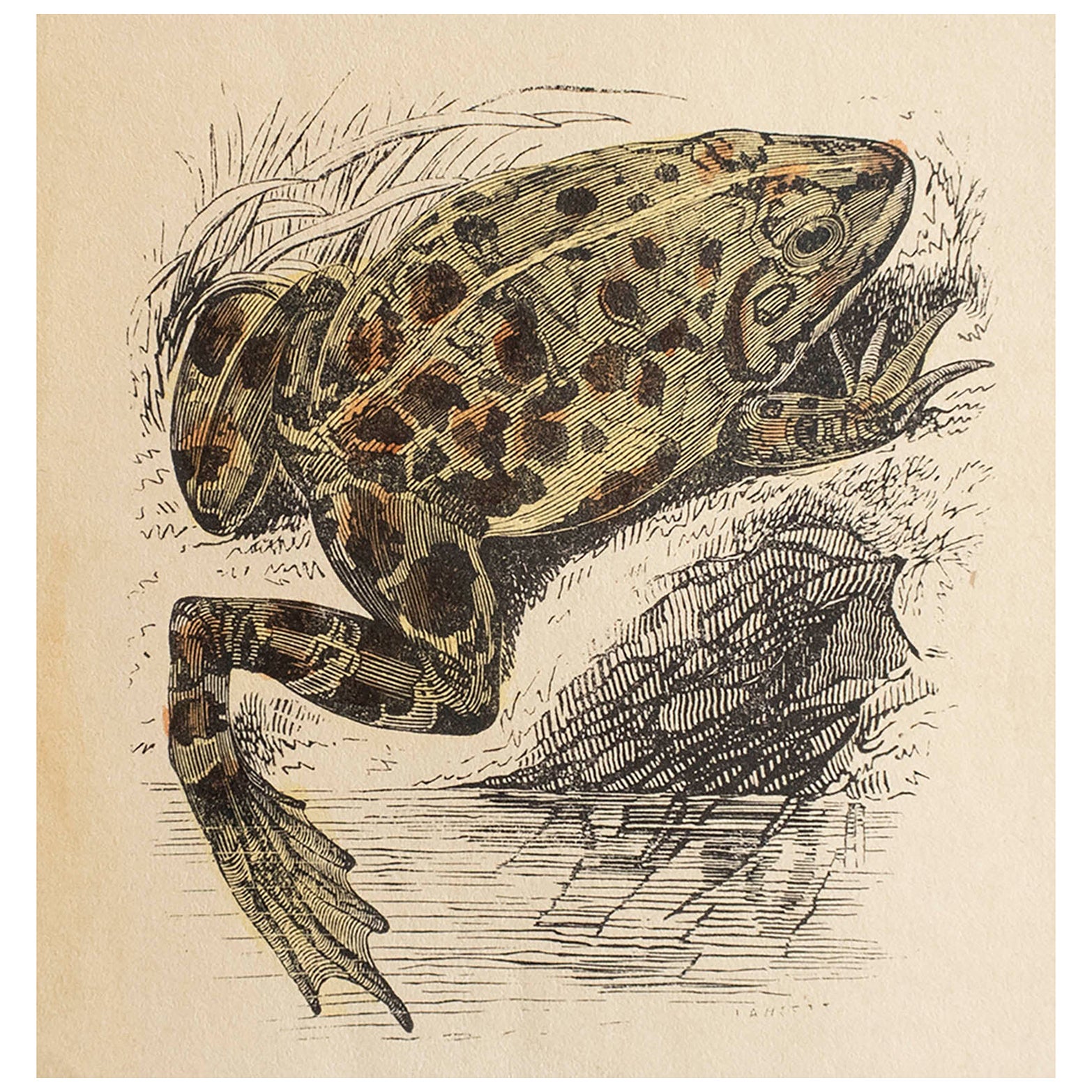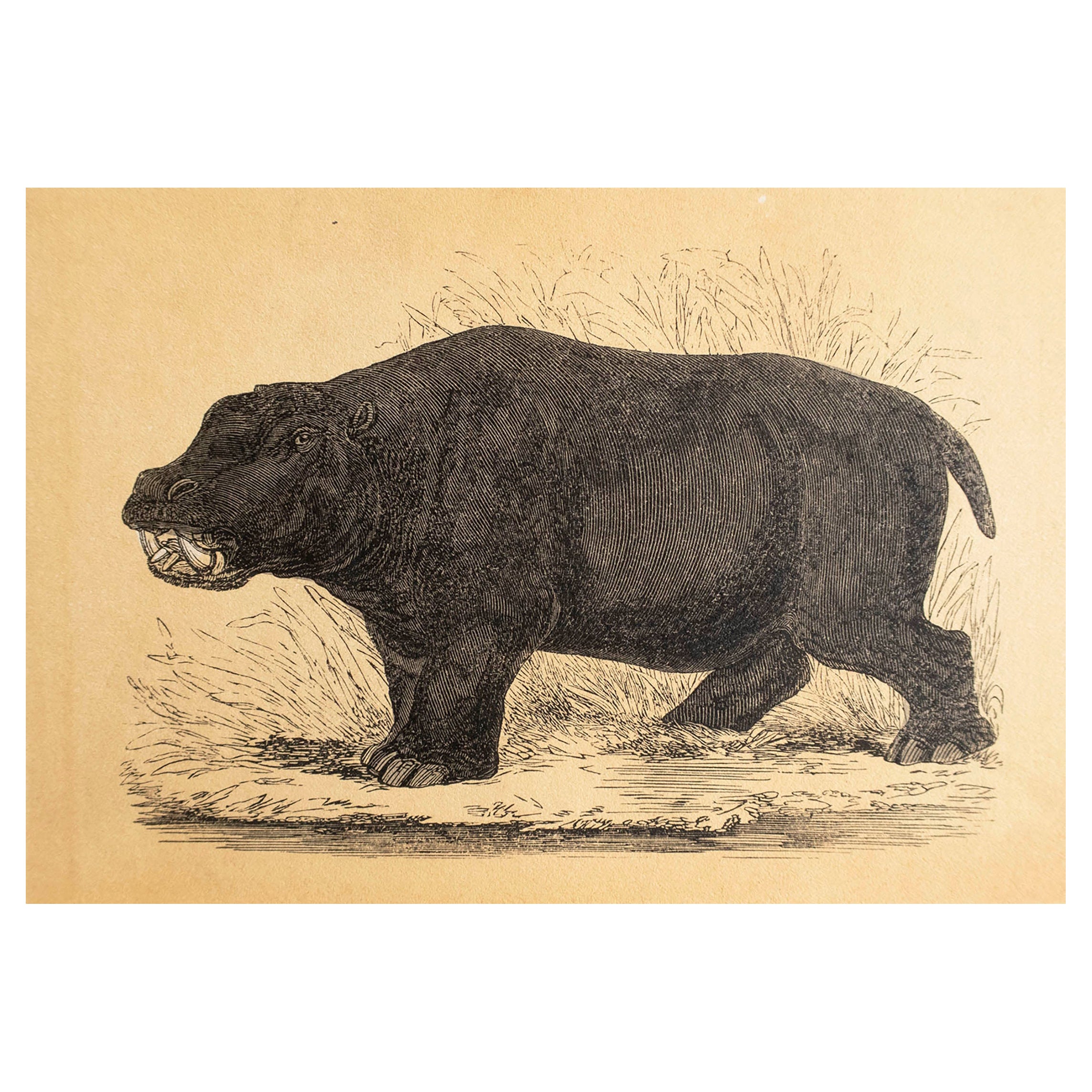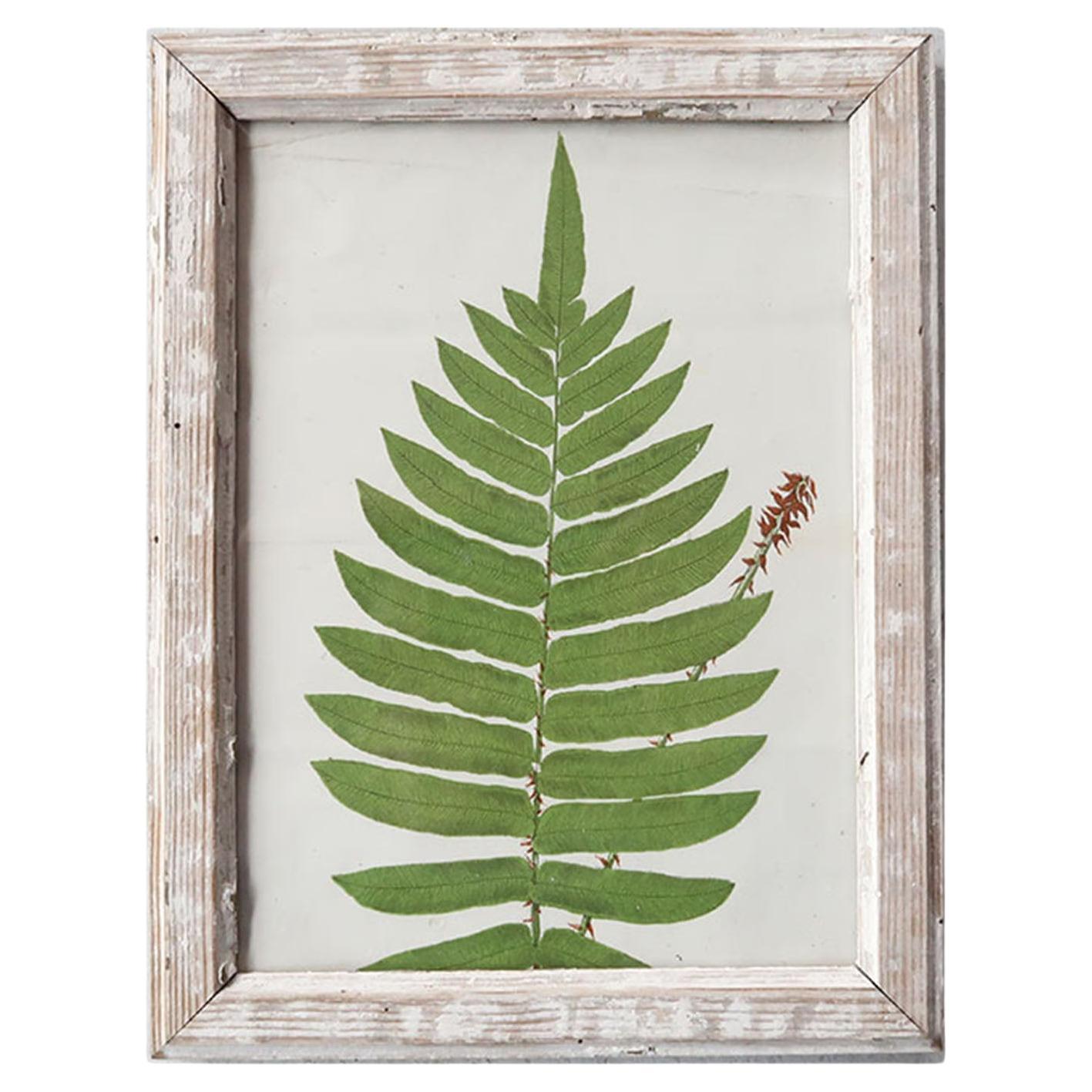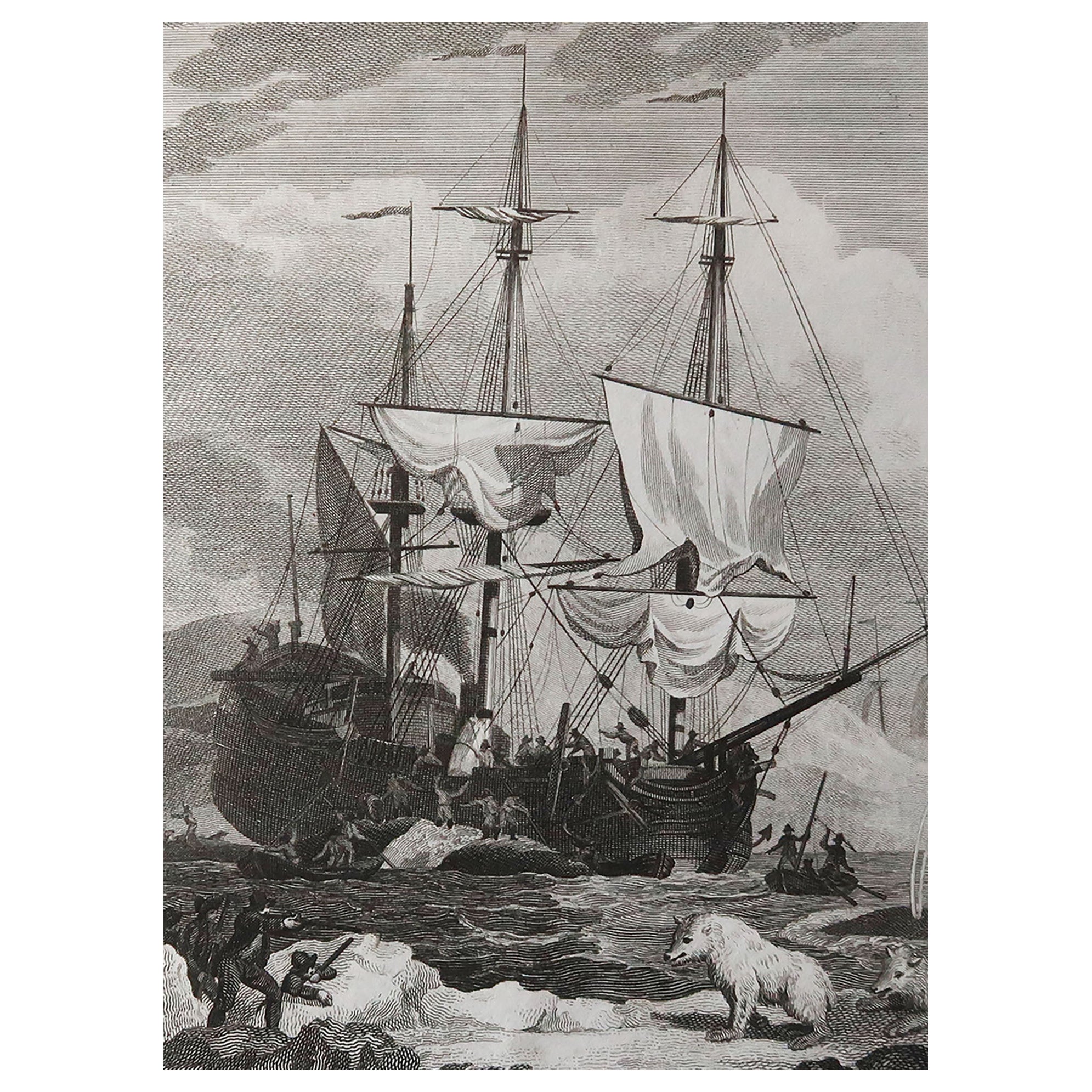Items Similar to Original Antique Baroque Sermon Pulpit with Full Arch Elevation, circa 1740
Want more images or videos?
Request additional images or videos from the seller
1 of 6
Original Antique Baroque Sermon Pulpit with Full Arch Elevation, circa 1740
About the Item
This is an original antique architectural design for a pulpit in baroque style dating approximately between 1740 and 1760.
The artist responsible for this design is Franz Xaver Habermann, and it was published by Johann Georg Hertel I in Augsburg. The design shows a richly decorated pulpit, typical of the Rococo style, which is known for its elaborate ornamentation, asymmetry, and curves. This image is one of four numbered plates related to this work. The detail in the engraving is meticulous, showcasing the elaborate aesthetic that characterized much of the European art and architecture during the mid-18th century.
Franz Xaver Habermann (1721–1796) was a German engraver and etcher who was active during the 18th century, a period marked by the Rococo style. Although not as widely known as some of his contemporaries, Habermann contributed significantly to the graphic arts during his time.
Habermann's work often featured architectural designs, such as the intricate pulpit depicted in the image you've provided. He was skilled in creating prints that detailed elaborate decorative schemes and architectural fantasies, which were popular during the Rococo period. His creations were known for their intricate details and the fluidity of their lines, capturing the lightness and ornamental excesses that characterized Rococo design.
Johann Georg Hertel I, who published Habermann's work, was part of a notable family of engravers and publishers in Augsburg, a city that was an important center for publishing in Europe at the time. The Hertel family played a significant role in disseminating artistic and architectural designs through their publications.
While specific details about Habermann’s life and training may not be as well-documented as those of major artists of his time, his surviving works suggest that he was a highly skilled engraver who had mastered the Rococo style, contributing to the spread of this aesthetic through his printed works. His designs would have influenced the tastes of the period, both within Germany and across Europe, where the appetite for such elaborate designs was significant.
More in detail about this engraving:
The print showcases a highly ornate pulpit in the Baroque style, viewed from the side angle. It is an architectural engraving, displaying the design in great detail. The pulpit is characterized by elaborate scrollwork, organic motifs, and dramatic curves, which are hallmarks of the Baroque period.
At the top of the pulpit, there is a decorative canopy, which includes a sculptural relief, possibly of religious significance, and is topped with what appears to be a figure of an angel. This figure adds a sense of verticality and grandeur to the structure, as it seems to watch over the proceedings from above.
The body of the pulpit itself is rich with decorative elements, including ornamental panels and a dynamic arrangement of curves and counter-curves. The pulpit is supported by a structure that includes a column or pedestal at the base, detailed with similar ornate patterns and motifs that resonate with the upper portions.
The drawing includes a side panel that might indicate the context in which the pulpit is set, suggesting the interior of a church with walls and possibly seating. Additionally, there is a ground plan to the lower part of the image, providing a bird's-eye view of the pulpit's footprint, which further aids in visualizing the spatial arrangement and the relation of the pulpit to its surroundings.
Overall, the print is a fine representation of Baroque ecclesiastical design, emphasizing drama, luxury, and movement through its complex decorative language. The craftsmanship of the engraving is meticulous, capturing the opulence and intricate designs that would have been carved into the wood or stone of the actual pulpit.
Note from seller: In our shop we also published the other three engravings in this series and they might still be on offer as well.
- Dimensions:Height: 16.54 in (42 cm)Width: 10.44 in (26.5 cm)Depth: 0 in (0.02 mm)
- Materials and Techniques:Paper,Engraved
- Period:1740-1749
- Date of Manufacture:circa 1740
- Condition:Good, given age. Light soiling near paper edges. Light staining. Left paper edges a bit rough from binding. Very light creasing from handling. General age-related toning and/or occasional minor defects from handling. Please study scan carefully.
- Seller Location:Langweer, NL
- Reference Number:Seller: BG-13675-431stDibs: LU3054338259292
About the Seller
5.0
Platinum Seller
These expertly vetted sellers are 1stDibs' most experienced sellers and are rated highest by our customers.
Established in 2009
1stDibs seller since 2017
1,922 sales on 1stDibs
Typical response time: <1 hour
- ShippingRetrieving quote...Ships From: Langweer, Netherlands
- Return PolicyA return for this item may be initiated within 14 days of delivery.
Auctions on 1stDibs
Our timed auctions are an opportunity to bid on extraordinary design. We do not charge a Buyer's Premium and shipping is facilitated by 1stDibs and/or the seller. Plus, all auction purchases are covered by our comprehensive Buyer Protection. Learn More
More From This SellerView All
- Baroque Pulpit Elevation with Ornate Archway and Balustrade Engraved, ca.1740Located in Langweer, NLThis is an original antique architectural design for a pulpit in baroque style with archway and balustrade dating approximately between 1740 and 1760. The artist responsible for th...Category
Antique 1740s Prints
MaterialsPaper
- Architectural Print of a Rococo Pulpit Elevation on a Corinthian Column, ca.1740Located in Langweer, NLThis is an original antique architectural design for a rococo pulpit dating approximately between 1740 and 1760. The artist responsible for this design is Franz Xaver Habermann, an...Category
Antique 1740s Prints
MaterialsPaper
- Old Baroque Pulpit Design with Corinthian Column and Staircase Plan, ca.1740Located in Langweer, NLArchitectural design with the central elements depicted in the engraving: the Baroque design of the pulpit, the inclusion of a Corinthian column which suggests a classical influence, and the presence of a staircase plan indicating the approach to the pulpit. Dating approximately between 1740 and 1760. The artist responsible for this design is Franz Xaver Habermann, and it was published by Johann Georg Hertel I in Augsburg. The design shows a richly decorated pulpit and archway, typical of the Rococo style, which is known for its elaborate ornamentation, asymmetry, and curves. This image is one of four numbered plates related to this work. The detail in the engraving is meticulous, showcasing the elaborate aesthetic that characterized much of the European art and architecture during the mid-18th century. Franz Xaver Habermann (1721–1796) was a German engraver and etcher who was active during the 18th century, a period marked by the Rococo style. Although not as widely known as some of his contemporaries, Habermann contributed significantly to the graphic arts during his time. Habermann's work often featured architectural designs, such as the intricate pulpit depicted in the image you've provided. He was skilled in creating prints that detailed elaborate decorative schemes and architectural fantasies, which were popular during the Rococo period. His creations were known for their intricate details and the fluidity of their lines, capturing the lightness and ornamental excesses that characterized Rococo design. Johann Georg Hertel I, who published Habermann's work, was part of a notable family of engravers and publishers in Augsburg, a city that was an important center for publishing in Europe at the time. The Hertel family played a significant role in disseminating artistic and architectural designs through their publications. While specific details about Habermann’s life and training may not be as well-documented as those of major artists of his time, his surviving works suggest that he was a highly skilled engraver who had mastered the Rococo style, contributing to the spread of this aesthetic through his printed works. His designs would have influenced the tastes of the period, both within Germany and across Europe, where the appetite for such elaborate designs was significant. More in detail about this engraving: This engraving features a detailed representation of a Baroque-style preacher's pulpit, intricately designed and placed upon a Corinthian column, demonstrating the grandeur of religious architecture during the Baroque period. The pulpit is richly adorned with elaborate scrollwork, acanthus leaves, and possibly religious iconography, all common elements in Baroque ecclesiastical design. A significant feature of this print is the inclusion of architectural details such as the Corinthian column base, known for its ornate capital with acanthus leaves and scrolls, which supports the pulpit above. This classical element signifies stability and order, providing a stark contrast to the exuberant decoration of the pulpit itself. To the right of the pulpit, there's a tall, slender window filled with panes that could either be clear or stained glass, framed by an ornate window arch...Category
Antique 1740s Prints
MaterialsPaper
- Original Antique Engraving of a Hunting Nymph, c.1740Located in Langweer, NLAntique print titled 'Nymphe de la Chasse'. Old print of a sculpture of Jardin des Tuileries (Tuileries Garden), Paris. It shows a hunting nymph. Source unknown, to be determined. ...Category
Antique 18th Century Prints
MaterialsPaper
- Antique Map of Europe by Hederichs, circa 1740Located in Langweer, NLAntique map titled 'Europa Christiani Orbis Domina'. Rare miniature map of Europe. This map originates from 'Anleitung Zu den fürnehmsten Historischen Wissenschaften, Benanntlich Der...Category
Antique Mid-18th Century Maps
MaterialsPaper
- Antique Map of Germany by Hederichs 'circa 1740'Located in Langweer, NLAntique map titled 'Germania'. Rare miniature map of Germany and surroundings. This map covers the entirety of those lands traditionally occupied by Germanic peoples, from the Blatic...Category
Antique Mid-18th Century Maps
MaterialsPaper
You May Also Like
- Original Antique Print of Owls circa 1835Located in St Annes, LancashireGreat image of owls presented in a distressed antique oak frame Lithograph after Cpt. Brown with original hand color. Published, circa.1835 .Category
Antique 1830s English Folk Art Prints
MaterialsOak, Paper
- Three 18th Century Hand Coloured Orientalist Views of Egypt, Circa 1740By Frederik Ludvig NordenLocated in Ottawa, OntarioThese fine mid 18th century orientalist hand coloured engravings with full margins, were originally drawn in 1737 by Frederik Ludvig Norden, then engraved & printed by Markus Tuscher in 1743 & 1744. Frederik Ludvig Norden (1708-1742) was a Danish naval officer, cartographer & archaeologist who travelled down the Nile through Egypt into the Sudan during the years 1737-1738. The account of his travels 'Voyage d' Egypt et de Nubie' was published over a decade after his death, along with these & other engravings of his drawings by Markus Tuscher (1705-1751). These plates are considered to be the earliest & most significant illustrations drawn prior to Dominique Vivant Denon...Category
Antique Mid-18th Century Egyptian Other Prints
MaterialsPaper
- Antique 1702 Swedish Baroque Architectural Etchings - Set of 3Located in Seguin, TXSet of 3 antique circa 1702 architectural etchings by Johannes van den Aveelen. Includes the Tessin Palace in Stockholm, Swedish Bank and Schellnora estate. From a large series of ...Category
Antique Early 1700s Swedish Baroque Prints
MaterialsPaper
- Antique 1698 Swedish Baroque Manor Estate Etchings - Set of 3Located in Seguin, TXSet of 3 antique 1698 bird's-eye view etchings of Baroque Swedish estates and gardens by Johannes van den Aveelen, 1698. Includes Noor, Roserberg and Malma. From a large series of e...Category
Antique Early 1700s Swedish Baroque Prints
MaterialsPaper
- 2 Francois Boucher Antique Baroque Mezzotint Poetry Engravings Mother CherubsBy François BoucherLocated in Dayton, OHPair of Francois Boucher Mezzotint Engravings from the first half of the 20th century. The colored engravings have a classical design with a Poetry theme. Matted and framed in gol...Category
Early 20th Century Baroque Prints
MaterialsPaper
- Victor Vasarely Original Serigraph, Circa 1970, "Juggler"By Victor VasarelyLocated in Phoenix, AZVictor Vasarely (1906-1997) Original Serigraph circa 1970 - "Juggler" Pencil signed lower right and numbered lower left. 240 of the edition of 250. Image: 25.88 x 15.88 inches. Pap...Category
Late 20th Century Prints
MaterialsPaper





